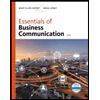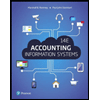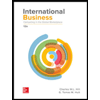
Book Title
10th Edition
ISBN: 9781337605656
Author: CROSS
Publisher: CENGAGE L
expand_more
expand_more
format_list_bulleted
Question
Chapter 17, Problem 6BCP
Summary Introduction
Case s ummary:LLC named F and M sued the company MA, situated in New Jersey, in federal district court. 10
To f ind: The possibility in enforcement of diversity jurisdiction by the district court assuming that the amount in controversy had exceeded
Expert Solution & Answer
Trending nowThis is a popular solution!

Students have asked these similar questions
4. Supply and Demand. The table gives hypothetical data for the quantity of
electric scooters demanded and supplied per month.
Price per
Electric Scooter
Quantity
Quantity
Demanded
Supplied
$150
500
250
$175
475
350
$200
450
450
$225
425
550
$250
400
650
$275
375
750
a. Graph the demand and supply curves. Note if you prefer to hand draw
separately, you may and insert the picture separately.
Price per
Scooter
300
275
250
225
200
175
150
250
400
375425475
350 450
550 650 750
500
850 Quantity
b. Find the equilibrium price and quantity using the graph above.
c. Illustrate on your graph how an increase in the wage rate paid to scooter
assemblers would affect the market for electric scooters. Label any new lines in
the same graph above to distinguish changes.
d. What would happen if there was an increase in the wage rate paid to scooter
assemblers at the
same time that tastes for electric scooters increased?
1ང
3. Production Costs
Clean 'n' Shine is a competitor to Spotless Car Wash. Like Spotless, it must pay $150 per day for
each automated line it uses. But Clean 'n' Shine has been able to tap into a lower-cost pool of labor,
paying its workers only $100 per day. Clean 'n' Shine's production technology is given in the
following table. To determine its short-run cost structure, fill in the blanks in the table.
Fill in the columns below.
Outpu Capita Labor TFC
TVC
TC
MC
AFC
AVC
ATC
1 0
30
1 1
70 1 2
120
1 3
160
1
4
190
1 5
210
1 6
a. Over what range of output does Clean 'n' Shine experience increasing
marginal returns to labor? Over what range does it experience diminishing
marginal returns to labor? (*answer both questions)
b. As output increases, do average fixed costs behave as described in the text?
Explain.
C. As output increases, do marginal cost, average variable cost, and average
total cost behave as described in the text? Explain.
d. Looking at the numbers in the table, but without…
General Accounting
Knowledge Booster
Similar questions
- Do not copy from another same ques answer, I need different one. Give image, table, graph with source, this full ques within 2500word TASK DESCRIPTION Successful brand extensions allow companies to diversify their offerings and increase their market share. Brand extension will provide any company a competitive advantage over its rivals that do not offer similar products. You are expected to select a live/real organisation which is suitable to the task and launch a new product/service. Please discuss with your lecturer your choice before proceeding. For your Portfolio you need to complete the following tasks: 1. 2. Develop a new brand extension for the organisation you have selected for one of their product/service. Determine segmentation, targeting and positioning for the new brand extension. 3. Develop a detailed customer personal profile for the new brand extension, including demographic and psychographic information. 4. Develop the marketing mix strategies for the new brand…arrow_forwardI need assistance with this financial accounting question using appropriate principles.arrow_forwardPlease explain the solution to this general accounting problem using the correct accounting principles.arrow_forward
- Give an explanation of UK Vodaphone for the 4 points for bellow each table (a) Explain the ratio, (b) comment on the numbers in the table above. (c)Explain the reason why? (d) What do you think? After that, write a content "critical assessment of the firm's working capital management over the same Beriod jnclude graphical illustration to support your answer. 2020 2021 2022 2023 2024 Gross margin 31.78% 31.3% 32.9% 35.3% 36.2% Net margin 1.77% .26% 5.76% 25.9% 4.1% 2020 2021 2022 2023 2024 Current ratio 1.02 0.99 1.17 0.89 4.96 Cash (aşİR .36 0.20 0.26 .34 .71 2020 2021 2022 2023 2024 Debt to equity | 1.69% 1.43% 1.51% 1.03% 1.37% ratio Debt to capital | 62.8% 55.55% 112.74% 58.5% 57.8% casio 2020 2021 2022 2023 2024 Asset turnover 0.29 0.30 0.24 0.24 0.24 Fixed asset 1.30 1.10 1.10 1.20 1.10 turnover 2020 2021 2022 2023 2024 Inventory days 7.47 11.94 9.0 10.6 11.26 Inventory -551 -441 -6069 -3922 -2770 turnoverarrow_forward3. Develop a high-level or summary: a. Risk Management Plan Focus on specific, actionable steps for each risk and mitigation strategy.Provide detailed timelines for procurement, stakeholder engagement, and risk monitoring.Avoid over-simplifying and add more technical details in areas like quality assurance and financial control measures. Add a risk prioritization method and mention how risks will be monitored and reviewed throughout the project lifecycle. Overall, it is well organized andc overs key risks.arrow_forwardConsider how the role of accountants has changed over time. Just a few short decades ago, many accountants were writing down by hand each business transaction into a general journal, manually posting to the general ledger, and physically adding ledger figures to construct trial balances and financial statements. Imagine how many people it took to perform these processes and then imagine how many organizations needed these people.” Accounting is changing once again. The relentless adoption of new technology continues to increase the automation of routine processes that accountants have performed for centuries… While this reality of machine learning and artificial intelligence could be perceived as a threat to the accounting profession, it should instead be seen as an opportunity: accountants can once again shed the responsibility for mundane, time-consuming transactions and focus instead on value-added activities. Accountants can leverage their newfound time into driving business…arrow_forward
- Finance problem solvearrow_forward2. Elasticity and the Minimum Wage - The following graph depicts two labor markets for cashiers. We assume the same supply curve (cashiers respond similarly to wage offers in each city) but different demand functions (employer demand is more elastic – more responsive to wages - in one city than the other, perhaps because one has higher quality retail stores than the other). The y-axis shows hourly wages in dollars; the x-axis shows the number of employees in hundreds. Wage 12 11 29 10 9 00 8 7 Supply 5 4 3 2 1 D2 12 D1 0 0 1 2 3 4 5 6 7 8 9 10 11 12 Employment 11 With minimum wage of 8 dollars: A. What is the equilibrium level of employment before the minimum wage is imposed? B. A) According to the graph and given a minimum wage of 8 dollars, how many workers would employers want to hire if the demand for workers in City #1 looked like D1? B) How does that number compare to the market equilibrium employment? C. A) In City #1 (with demand curve D1), would there be an excess supply of…arrow_forward3. Develop a high-level or summary: Human Resource Management Plan Provide more concrete timelines and actionable steps for human resource management.Include more detailed risk management strategies and link them more explicitly to the overall project plan.Expand on how training and development will be evaluated and tracked.Also, the overall length is good, but some sections could be condensed by eliminating repetition (e.g., you discuss stakeholder communication and engagement in two sections without adding new information).Try not to repeat the same risk management ideas (e.g., resource sharing and stakeholder concerns) in multiple sections without adding value.arrow_forward
arrow_back_ios
SEE MORE QUESTIONS
arrow_forward_ios
Recommended textbooks for you
 BUSN 11 Introduction to Business Student EditionBusinessISBN:9781337407137Author:KellyPublisher:Cengage Learning
BUSN 11 Introduction to Business Student EditionBusinessISBN:9781337407137Author:KellyPublisher:Cengage Learning Essentials of Business Communication (MindTap Cou...BusinessISBN:9781337386494Author:Mary Ellen Guffey, Dana LoewyPublisher:Cengage Learning
Essentials of Business Communication (MindTap Cou...BusinessISBN:9781337386494Author:Mary Ellen Guffey, Dana LoewyPublisher:Cengage Learning Accounting Information Systems (14th Edition)BusinessISBN:9780134474021Author:Marshall B. Romney, Paul J. SteinbartPublisher:PEARSON
Accounting Information Systems (14th Edition)BusinessISBN:9780134474021Author:Marshall B. Romney, Paul J. SteinbartPublisher:PEARSON
 International Business: Competing in the Global M...BusinessISBN:9781259929441Author:Charles W. L. Hill Dr, G. Tomas M. HultPublisher:McGraw-Hill Education
International Business: Competing in the Global M...BusinessISBN:9781259929441Author:Charles W. L. Hill Dr, G. Tomas M. HultPublisher:McGraw-Hill Education

BUSN 11 Introduction to Business Student Edition
Business
ISBN:9781337407137
Author:Kelly
Publisher:Cengage Learning

Essentials of Business Communication (MindTap Cou...
Business
ISBN:9781337386494
Author:Mary Ellen Guffey, Dana Loewy
Publisher:Cengage Learning

Accounting Information Systems (14th Edition)
Business
ISBN:9780134474021
Author:Marshall B. Romney, Paul J. Steinbart
Publisher:PEARSON


International Business: Competing in the Global M...
Business
ISBN:9781259929441
Author:Charles W. L. Hill Dr, G. Tomas M. Hult
Publisher:McGraw-Hill Education
